Since Apollo, Parkes has often participated in tracking Deep
Space missions.
During the Voyager 2 encounter with Uranus, for example,
Parkes and the antennas at Tidbinbilla (CDSCC)
were arrayed to substantially increase the rates at which science data could
be received from the spacecraft. This arrangement was known as the Parkes–Canberra Telemetry Array (PCTA).
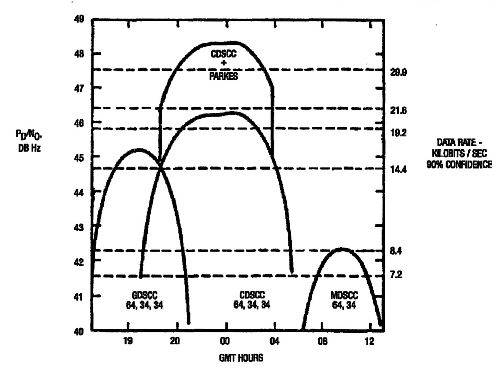 |
This plot of expected data rates from Voyager 2 shows the impact of arraying Tidbinbilla (CDSCC) and Parkes.
The leftmost curve shows data rates expected at Goldstone.
The rightmost curve represents Madrid. The lower elevation of Uranus at Madrid would be a major factor in lower data rates.
The central two curves represent the data rate at Tidbinbilla with and without the array with Parkes.
It was because of this advantage that the Voyager 2 encounter with Uranus was timed to coincide with coverage by the PCTA.
Plot courtesy of Doug Mudgway’s Uplink – Downlink. |
The above plot is also in the Tidbinbilla / Voyager 2 section.
When Mike Dinn re-joined the team at Tidbinbilla in 1983, StaDir Tom Reid tasked him with overseeing the implementation of the array.
Voyager 2 was launched on August 20, 1977.
After encountering Jupiter in July 1979, and Saturn in August 1981, Voyager 2 was directed to Uranus and Neptune, and ultimately, out of the Solar System.
Uranus encounter, January 1986.
On January 25 (Australian time) 1986, the spacecraft passed just 81,500 kilometres above the cloudtops of Uranus.
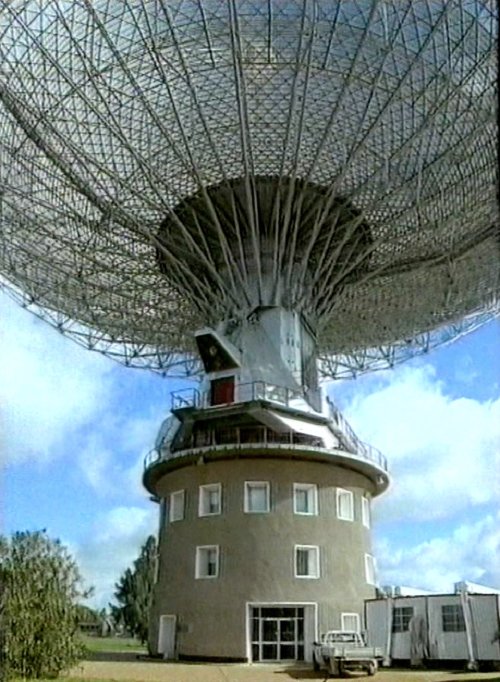 |
|
For the Voyager 2 Uranus encounter, a large amount of equipment from Tidbinbilla was installed in the portable building at right, parked next to the telescope. Mike Dinn was tasked with running the operation, and hence the building became known as “Dinn’s Diner”.
Image assembled from a CSIRO video. |
This series of photos was taken by a visitor from JPL (sorry, I don’t know his name).
They were preserved by Mike Dinn and scanned by Colin Mackellar.
Any help with names would be appreciated.
(Higher resolution versions available on request.)
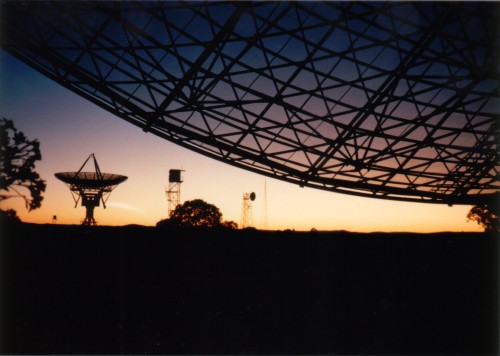 |
18. Sunrise at Parkes. |
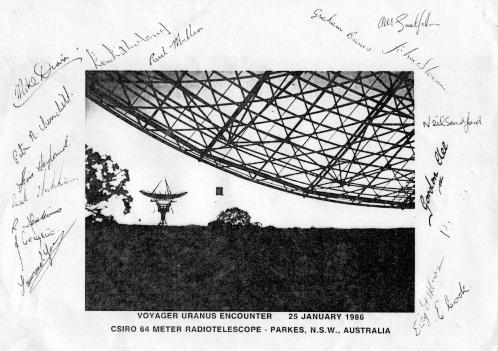 |
And here’s an autographed copy – with thanks to Stew Burton. |
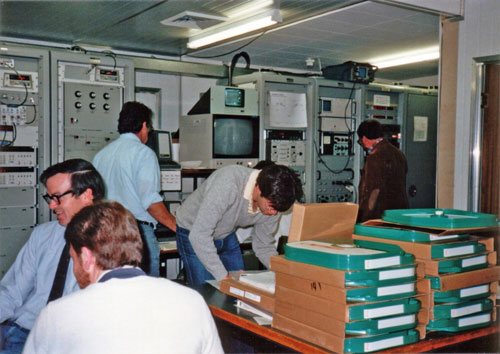 |
1. Voyager II Uranus encounter at Parkes.
Note the telemetry tapes on the table. |
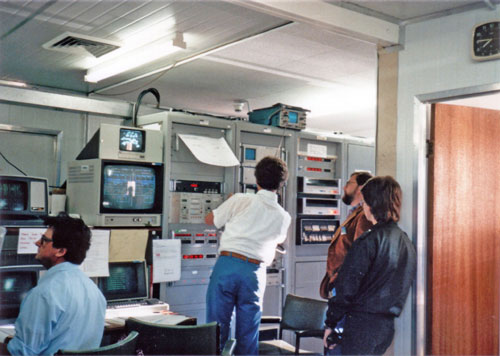 |
2. Paul Mullen is seated at left. Peter Churchill (later CDSCC StaDir) is standing with back to the camera. |
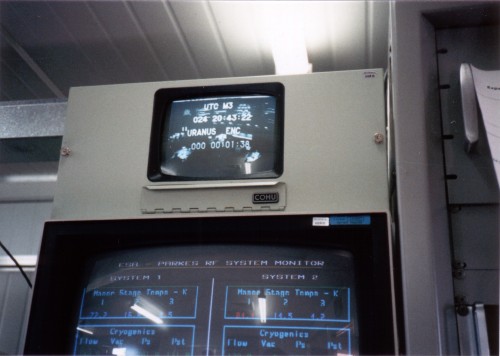 |
3. Countdown to encounter. |
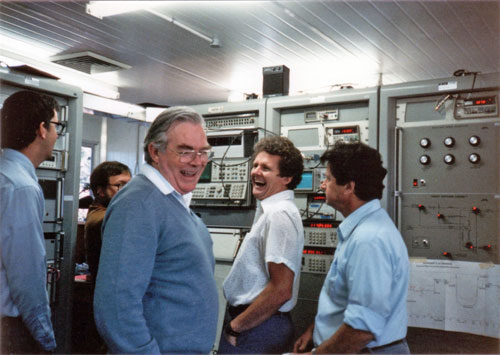 |
4. L-R: ?, ?, Mike Dinn, Peter Churchill, Paul Mullen. |
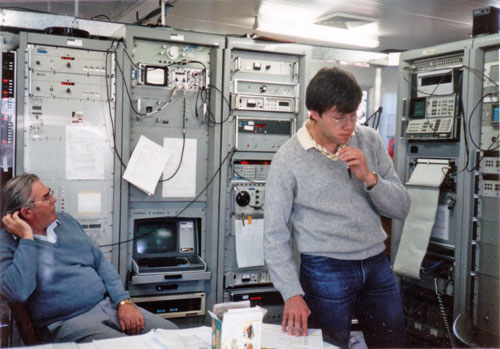 |
5. |
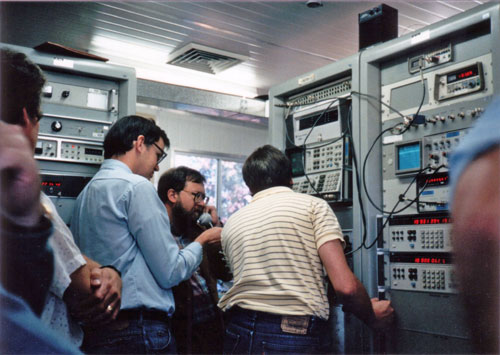 |
6. |
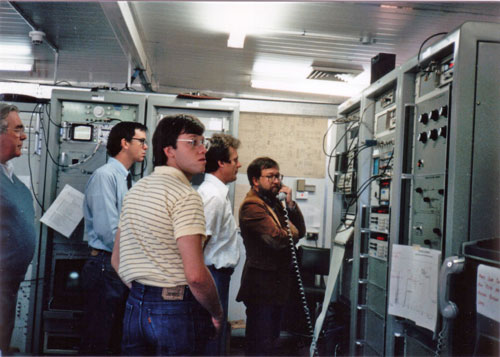 |
7. |
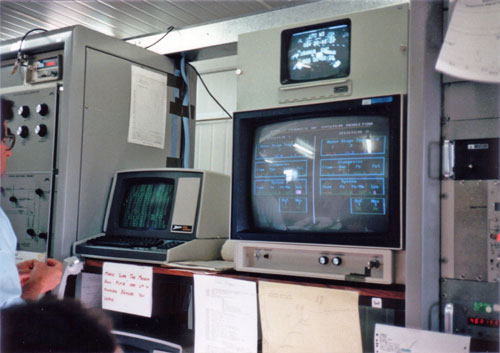 |
8. |
 |
11. Display showing radio events for the encounter. |
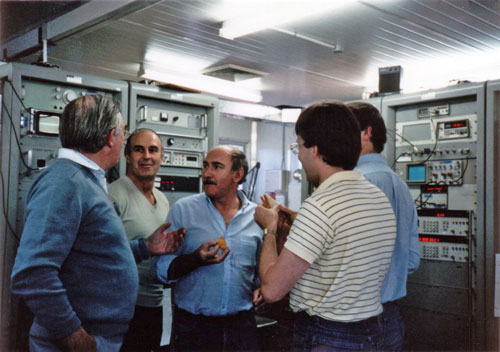 |
12. Mike Dinn at left, Len Litherland in centre. |
 |
14. |
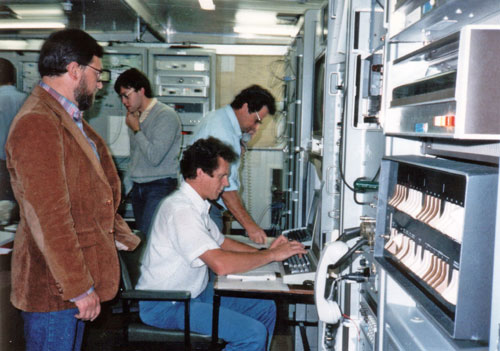 |
16. Peter Churchill at the keyboard. |
Peter Churchill adds (2023):
“I spent the Voyager II Uranus encounter at the Parkes telescope where we had a
demountable building set up beside the pedestal.
I remember we had a spare chart recorder set up attached to the equipment so we could see the incoming signal strength. We were advised that a
particular signature should be identifiable if Uranus had an ionosphere
which was an unknown at the time.
Sure enough, the signature showed up, so
we joked that there were several of us at Parkes and probably a dozen at
CDSCC that were the first people to know that Uranus has an ionosphere,
because it took about 6/10ths of a second for the data to arrive at JPL.”
 |
17. |
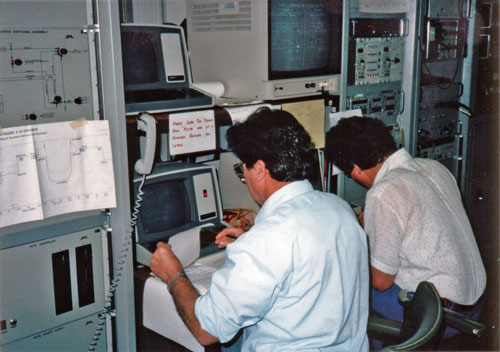 |
20. Paul Mullen and Peter Churchill. |
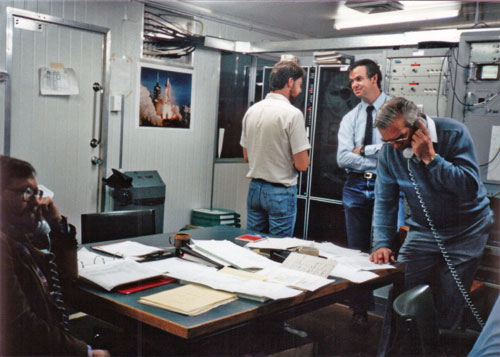 |
21. |
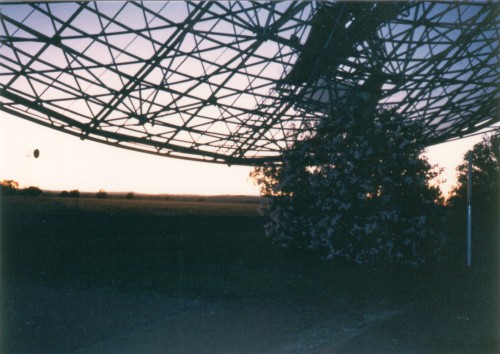 |
15. Sunrise. |
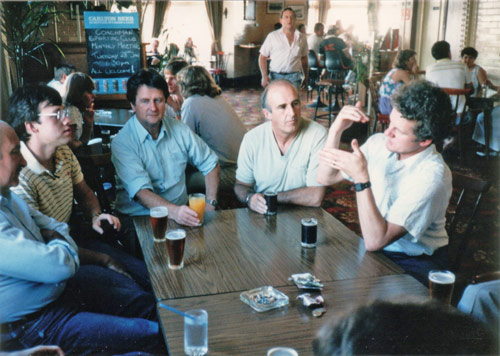 |
10. Relaxing after a track.
Len Litherland, ?, Paul Mullen, John Sloan, Peter Churchill. |
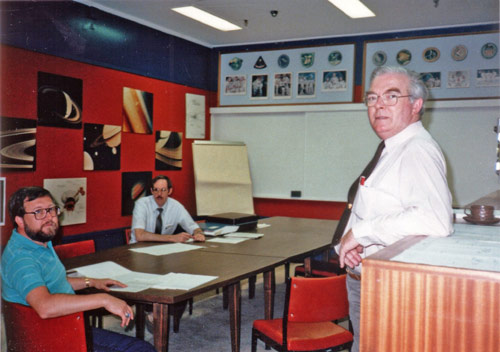 |
9. At Tidbinbilla.
?, Frank Donivan JPL, Mike Dinn. |
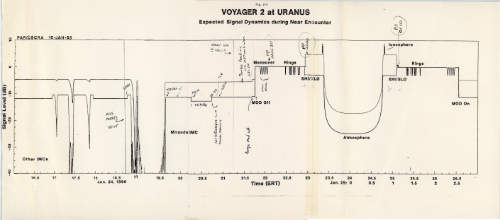 |
Mike Dinn preserved this plot of expected signal dynamics around the time of Uranus Near Encounter. |
Neptune encounter, August 1989.
On August 25 1989, Voyager 2 encountered Neptune, passing 4,950 kilometres above the gas giant’s north pole.
Point of closest approach (PCA) was at 13:57AEST.
These photos show members of the Tidbinbilla team at Parkes for the encounter. Photos courtesy of John Sarkissian and CSIRO.
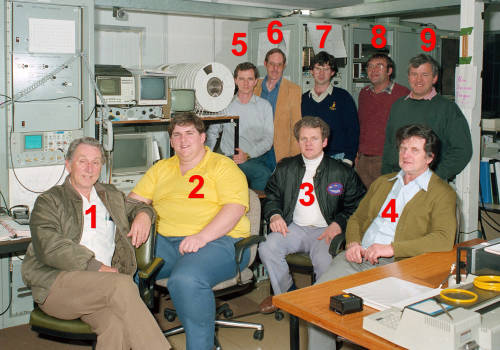 |
1. Neil McVicar, CDSCC
2. Mr Orlandi, a Parkes local who worked as a casual operator
3. Peter Churchill, CDSCC
4. Paul Mullen, CDSCC
5. Bob Jenkins, CDSCC RF engineer
6. Frank Donivan, JPL
7. John McCaffery, CDSCC
8. Bob Beard, CDSCC
9. Richard Jacobsen, CDSCC Deputy Director at the time.
With thanks to Peter Churchill and Mike Dinn for the names. |
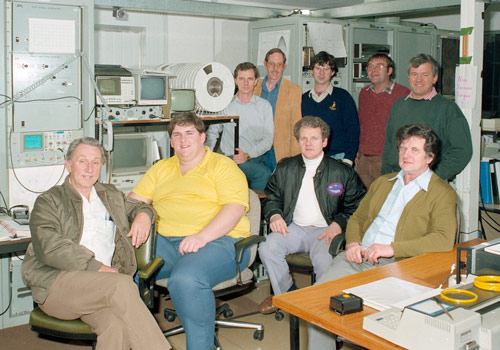 |
14. The Tidbinbilla (CDSCC) team at Parkes. |
 |
16. The Tidbinbilla (CDSCC) team at Parkes. |
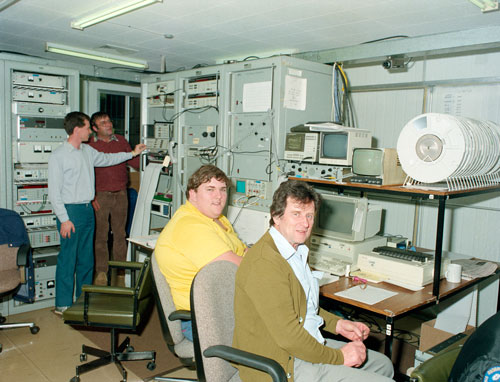 |
17. The Tidbinbilla (CDSCC) team at Parkes. |


























